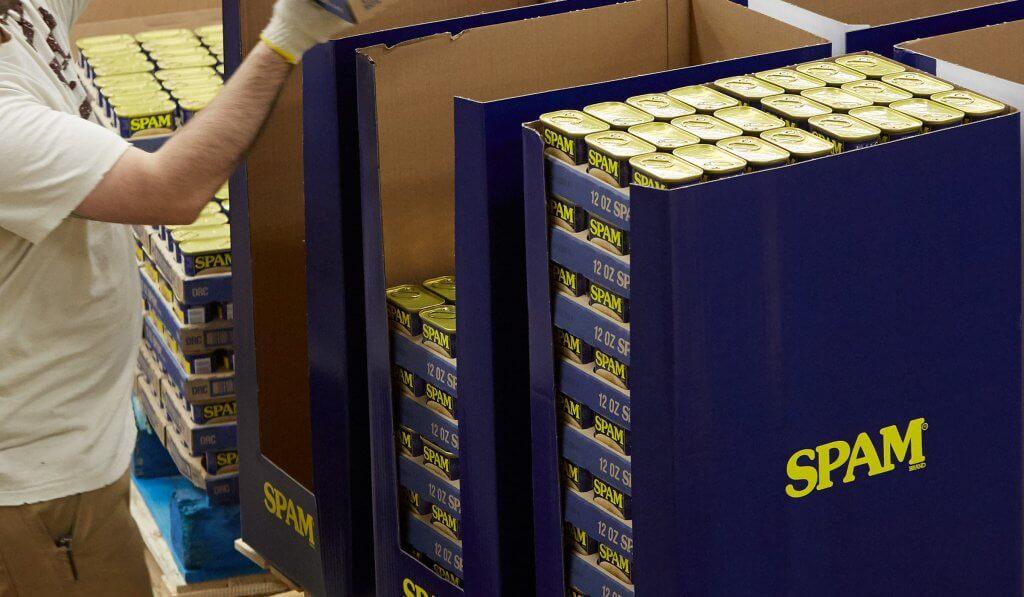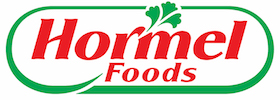Thinking Inside the Box
Reaching an ambitious packaging reduction goal: 25 million pounds by the year 2020
Inspired | Stories from Hormel Foods
By Ethan Watters
The mind-bending complexity of how food is packaged is something most consumers don’t pay much attention to. Consider the fact that there are over 11,000 distinct materials used to package Hormel Foods products. Figuring out exactly how to make those materials maximally efficient and sustainable falls to an elite group with an ambitious goal: In 2012, the packaging development team was challenged to reduce total packaging material by 25 million pounds by the year 2020. With only a year to go, the team’s job is getting more difficult.
The task boils down to this: examining each one of those 11,000 packaging components, finding ways to eliminate some and figuring out how to use the rest more efficiently. This might mean changing a package so shrink wrap is no longer required or eliminating a paper sleeve. It might mean reducing the weight of a plastic jar slightly or redesigning a shipping box so there’s no empty space. A job on the Hormel Foods packaging research and development team, which is comprised of eight members, comes with some substantial expectations.
Every year, each team member is expected to lead a series of projects that cumulatively eliminate 500,000 pounds of packaging material. This task is a lot more involved than just coming up with an initial idea — it also means mobilizing company resources and decisionmakers, then managing the change process until the redesigned package is headed out the door. Success at the end of each year is measured by one unforgiving question: How many hundreds of thousands of pounds of material did our projects save?
“We take our role in producing sustainable food very seriously,” said Dan Miller, director of research innovations. “We’re committed to building a sustainable future.”
Reducing packaging weight by 25 million pounds was a tall order to begin with, but the challenge is compounded by the fact that Hormel Foods had already, long before 2012, pioneered practices and technologies to make its packaging some of the most efficient and cost-effective in the industry. The motivation to keep optimizing is a confluence of environmental and business goals. Less material used in packaging means less money spent. Similarly, reducing a product’s weight and size creates savings during its transportation and storage. Lightweight, efficient packaging is also increasingly appealing to sustainability-minded consumers conscious of the environmental impact of the foods they choose and the waste their production, packaging and consumption create. Even more, when consumers buy Hormel Foods products, they expect the value of the purchase to be contained in the meal or snack — not in the jar, pouch or wrapper.
When you produce as many products and as much food as Hormel Foods does each year, even small changes can have a big impact. Just eliminating some extra space in Jennie-O® turkey burger cartons, for instance, saved more than 175,000 pounds each year. A redesign that removed 23 percent of the corrugated shipping box for Hormel® Compleats® meals saved 1.2 million pounds.
The Process
Each year the packaging R&D team selects the projects with the biggest potential impact and collectively shepherds 40 to 60 of them to completion. That means keeping pace toward the 2020 goal gets harder year over year. “You start by picking the watermelons, and then you move to the grapefruits,” said Miller, using a farm metaphor. “Soon you’re down to picking grapes.” That is, to become more innovative over time, the team has had to look for increasingly fine-grained improvements.
Some projects can still create large savings. In 2017, decreasing the weight of the cap on the SKIPPY® peanut butter jar reduced total material used by over 790,000 pounds. But many changes are now on a smaller scale, like the redesign of the display case for Hormel® Black Label® bacon, which saved 91,000 pounds.
Changing a package, particularly any part that touches the food, is never simple. Even the smallest tweak requires a combined effort of many team members across the company and an extensive review. A new shipping box must prove that it will keep its integrity over the course of travel. Even more important, a jar, can or pouch containing a food product must show that it can keep the food safe throughout its shelf life.
“There are two things that we won’t do,” said Miller. “We won’t make a change if it impacts either the quality or the safety of the product. Those are the forefront things that we always keep in mind, and if either is at risk, we aren’t going to do it.”
When it comes to testing these changes, Hormel Foods has a huge advantage in its new state-of-the-art R&D lab. While many food companies farm out their food safety and testing work, Hormel Foods has cutting-edge equipment and a dedicated staff always on hand.
“We have a lot of capabilities here that people don’t know about,” said Miller. “We only have to walk down to the R&D facility to talk to a scientist about how a particular product behaves so we can make sure that product stays perfect for consumers. That helps us make changes relatively quickly. But having those resources inhouse also means that the knowledge we gain with each project can be applied to the next.”
One challenge the group faces is that packages change along with consumers’ eating habits. “Consumers want portability and smaller portions,” packaging engineer Chad Donicht explained. “They want just the right size so when they open the package, food isn’t wasted. That’s where a lot of the fast changes are coming right now.”
The packaging R&D team believes it’s on track to meet its challenge. “We’re at 99 percent of our 2020 goal of 25 million pounds,” said Miller. “And we’re planning on getting there.”






